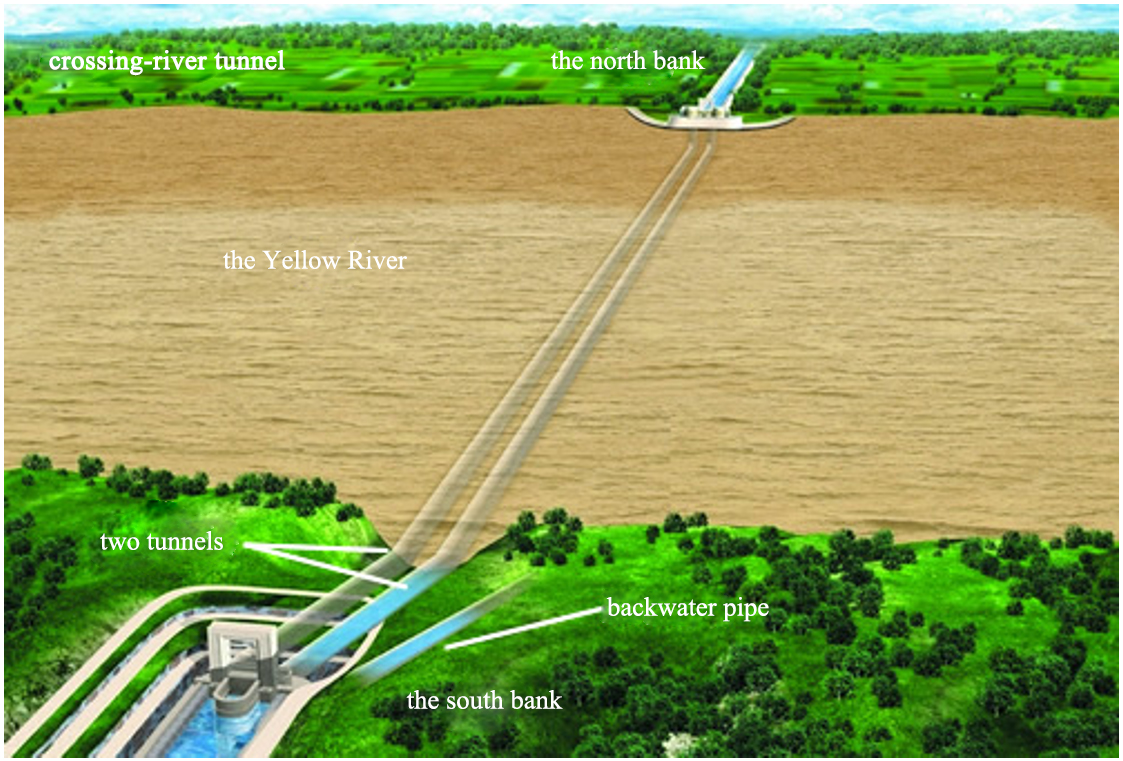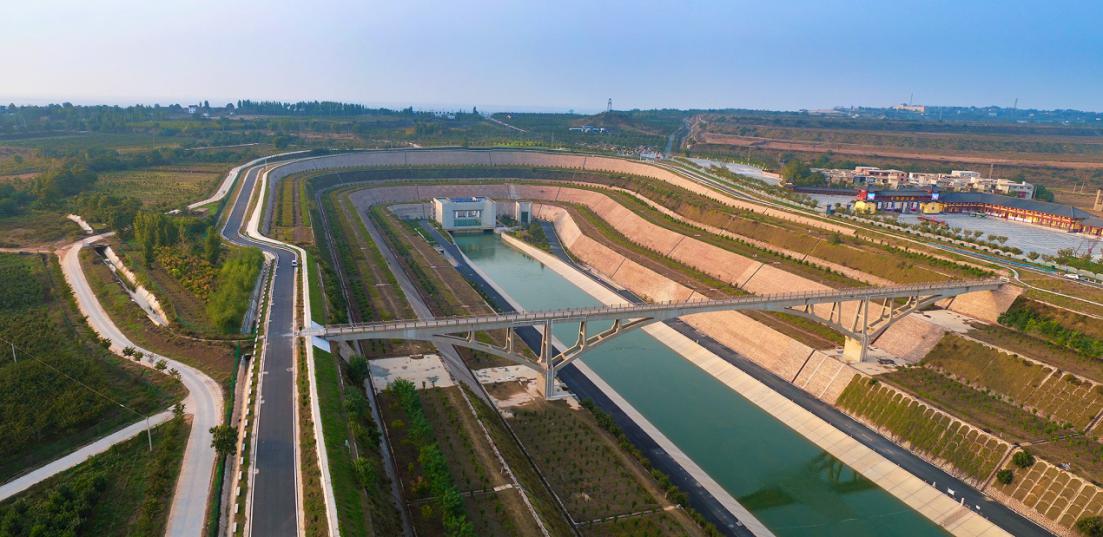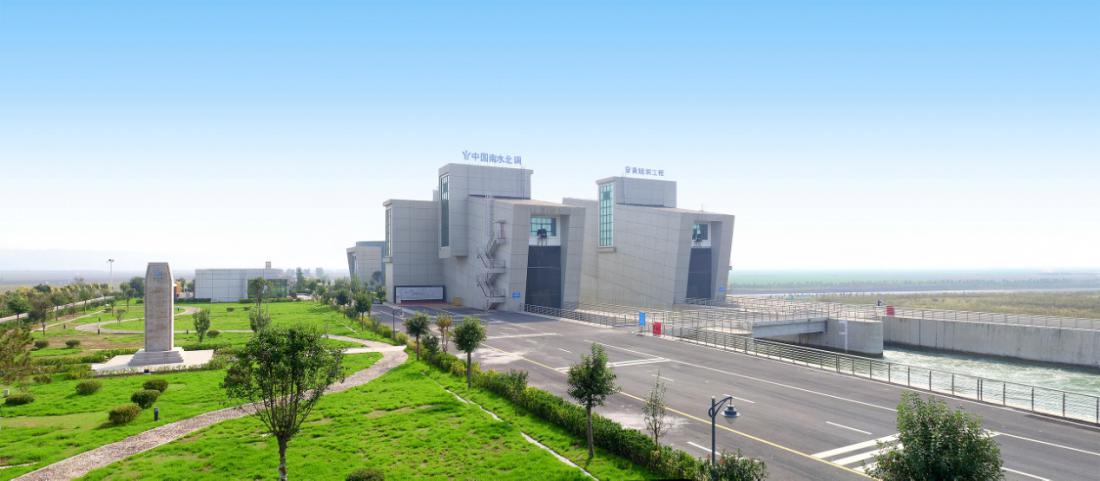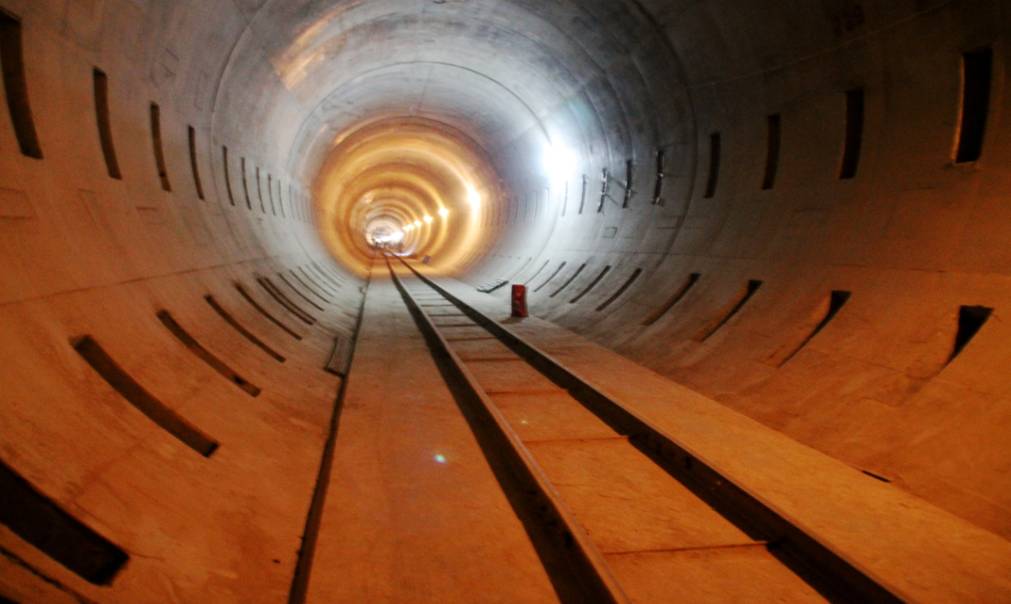Located in Gubozui, about 30 kilometers west of Zhengzhou City, Henan Province, the Crossing-Yellow River Project is a landmark in the middle route of the South to North Water Transfer Project, which refers to the underground tunnel across the Yellow River. The middle route of the South to North Water Transfer Project is supposed to channel the Yangtze River water from the Danjiangkou reservoir all the way to the north, but the Yellow River forms a natural barrier to block the way of the south water to the north. To tackle this problem, the Crossing-Yellow River Project, the largest river-crossing water project in human history, was built up.

Figure 1 Scheme of the Crossing-Yellow River Project
The project has a total length of 19.3 kilometers, including a 13.95km open channel, a 4.71km tunnel and 0.65km buildings. The "tunnel under the river" mode is employed in the crossing-river section. Two tunnels with a diameter of 7 meters each are set in parallel at a depth of 40 meters under the river bed to cross the Yellow River. The double tunnels can ensure flow increase when required and continuous water supply in case of accidents. By the principle of "inverted siphon", the water inlet (the south bank) is higher than the water outlet (the north bank), and thus water will flow towards the outlet in the wake of pressure disparity between the two ends. The entrance is an inclined shaft and the exit is a vertical one, facilitating sound operation and maintenance, and saving investments.
The tunnels withstands both the external water and soil pressure and the internal flowing water pressure, so its wall adopts two layers of reinforced concrete lining, respectively bearing external and internal pressures. The outer layer is 0.4m thick assembled segment structure lining and the inner is 0.45m thick reinforced concrete prestressed one. The two layers of lining are separated by permeable cushion. A large number of monitoring devices and instruments are installed in the tunnels to carry out operation monitoring of the tunnel in real time. The anti-seismic design capacity of the Crossing-Yellow River project is grade 8, and its flood control capacity is designed according to the 300-year flood and checked according to the 1000-year flood of the Yellow River.

Figure 2 the south bank (the water inlet)

Figure 3 the north bank (the water outlet)
The tunnels are excavated by Tunnel Boring Machine (TBM), with a diameter of 9 meters, a length of over 80 meters and a total weight of 1100 tons. In the process of construction, a series of technical problems are addressed, such as unstable river bed of the Yellow River, complex geological conditions and sand liquefaction during vibration. It is the first time that the slurry balanced pressure shield is put into place for tunneling, and many new cutting-edge technologies, including double lining structure, are practiced.
During the tunnel excavation, the TBM parameter, thrust, torque, speed and penetration angle are constantly adjusted in accordance with the variation of geological conditions. Many block stones and ancient tree trunks in the river bed, and changes in the stratum composition and water pressure all pose threats to the safety of construction.

Figure 4 Inside of the tunnel
The Crossing-Yellow River Project realizes the interchange of water from the Han River and the Yellow River, presents the magnificent landscape of river meeting, and embodies the wisdom and courage of the Chinese nation. The middle route of the South to North Water Transfer Project has realized continuous and safe water supply for over 1900 days since its official operation, cumulatively diverting 30 billion cubic meters of water and directly benefiting more than 120 million people. It becomes the new lifeline of water supply in many cities with remarkable economic, social and ecological benefits.

